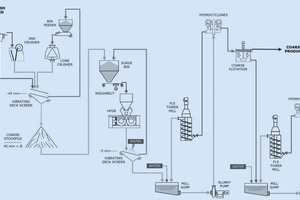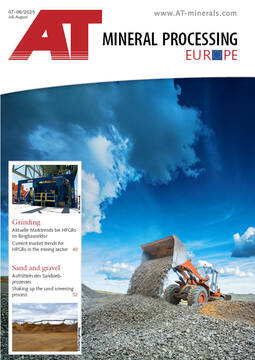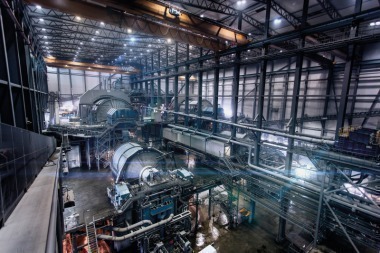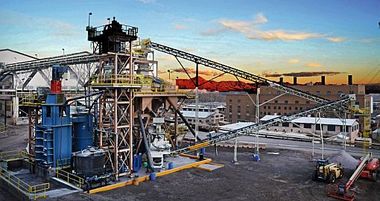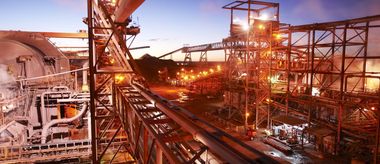Current market trends for HPGRs in the mining sector
HPGRs have developed into an efficient process for grinding ore. On account of the high savings in the specific grinding energy required, not only large quantities of energy are reduced in ore beneficiation plants, substantial CO2 savings can be achieved, too. In the following paper, the spotlight is on current developments.
1 Introduction
The quantities of energy used for grinding ore account for around 2 % of global energy consumption. This has become an increasingly important aspect in mining, which can be attributed to the fact that the quantities of ore extracted are steadily increasing to make up for the decreasing content of metal in the ores. This does not even include the investments in new mining operations expected over the next few years. Current figures assume that the global demand for copper alone will increase by 70 % by the year 2050. High growth rates are also expected for other metals, and the demand for lithium, rare earths, precious metals and iron ore are set to rise, too. The ores needed for their production are all materials that must be ground, and in these applications HPGRs (High Pressure Grinding Rolls) can demonstrate their outstanding performance. This is not only derived from the lower specific grinding energy required but also improved metallurgical properties.
2 Challenges in mining
After years of relatively low investment in the mining sector, the signs are now pointing to growth. The mean reason are the huge efforts going into the expansion of clean energy to achieve set climate protection goals. A study by the International Energy Agency (IEA) shows, for example, that from 2021 to 2023 alone, solar power increased by 85 % worldwide, wind power by 60 % and electric vehicles by 30 % [1]. But that is only the beginning of a trend evidenced especially by the demand for critical minerals. Fig. 1 shows the development of investments in the extraction of non-ferrous metals over the last ten years or so, according to a study by the IEA and S&P Global as the source of the data [2]. From 2020 to 2023, the investments of the different players in the sector increased again by a factor of 1.75 to more than 50 bill. US$.
In more recent analyses by the firm of consultants Wood Mackenzie, the trend is continuing for 2025 [3]. According to these analyses, investments in the sector are set to rise to more than 70 bill. US$ (Fig. 2). That would be more than ever invested before. The capital expenditure discipline propagated in recent years no longer seems to be a significant factor. Naturally, there are other reasons for the rise in investments. One very important aspect is the desire for greater digitalization of the plants and the introduction of AI, to achieve greater savings in almost all areas of mining. We have provided an insight in a recent issue of this journal [4]. The advances that can be achieved here can include significantly better production rates, higher throughput rates, lower energy consumption, longer mine lifetimes and greater safety. Companies that fail to keep up with this trend are likely to suffer severe competitive disadvantages.
Another major factor with regard to future investments are the regulations requiring a reduction in energy consumption and therefore a stop to the rising CO2 emissions. To lower energy consumption, several measures can prove expedient, like improved procedures along with production automation and monitoring. Besides these production processes, the key factor is whether it is possible to reduce the specific energy consumption for comminution and grinding in mining [5; 6; 7]. In Fig. 3, based on the example of copper ore, the correlation between energy consumption and the content of copper in the processed ore is shown [8]. With decreasing copper content, the energy consumption can increase many times over. That is the case when finer grinding is necessary and the quality of the copper ore is poorer. Existing mill concepts reach their limit, here. One solution is promised by HPGRs or High Pressure Grinding Rolls.
3 Market development for HPGRs
Compared to conventional grinding processes, HPGRs have only been on the market for a relatively short time. Following their introduction in the cement sector in the early 1980s, the mills have only used in mining since 1988, for grinding kimberlite and iron ore [9]. Fig. 4 shows how over the first 15 years the number of machines sold rose to 201 units. The market leaders were Polysius with 101 units, followed by KHD Humboldt Wedag with 56 machines, Koeppern and Lee Jun each with 17 units along with Metso, CITIC and FLSmidth, which only entered the market later with a total of 10 units. Fig. 5 shows for which materials and in which countries the HPGRs have been ordered. Iron ore or iron ore concentrate lead the materials with a total of 93 machines, followed by kimberlite with 39 units, copper ore with 36 and other hard rock with 33 units. Key markets have so far been China (55 units), Brazil and Australia (24 units each), South Africa (17 units), and Peru (14 units).
In the years up to 2012, there was already a shift to larger capacities and a change in the type of drive. Moving on from the relatively small roll sizes of 200 to 500 mm at the beginning, ever larger units with roll diameters of 3000 mm have come on the market. The grinding applications required ever larger throughput rates and greater finenesses, and the typical applications have shifted from secondary to tertiary grinding such that SAG mills have been completely replaced with HPGRs in some process flowcharts. Instead of drives with fixed grinding speeds, more drives with variable speed (VSD) have been launched onto the market. At KHD, the VSD percentage of VSD since market launch in 1995 already reached 85 % of the mills sold up to 2012. At the other western manufacturers of HPGRs, the machines have undergone a similar development. There are no exact figures on the Chinese manufacturers.
At the time around the turn of the millennium, market expectations were very high. Up to 2023, however, the handsome sales figures of more than 20 units per year could not be matched again. That has now changed. In 2024, FLSmidth alone sold 19 new units. In 2022, FLSmidth had taken over the TK Mining units and therefore the HPGRs from Polysius. Back in 2013, Weir Minerals had already completely taken over HPGR technology for the mining sector from KHD Humboldt Wedag under a licence. The currently installed HPGRs units supplied by FLSmidth including the Polysius mills are shown in Fig. 6. If these figures are compared with the company’s previous data, the largest growth rates with above 20 units came for the other ores (incl. for the pelletization of iron ore), 17 units for precious metals (especially gold) as well as 9 units for base metals. For kimberlite, there have been no new sales at FLSmidth.
4 New technical features for HPGRs
The latest generation of HPGRs (Fig. 7) exhibits a series of improvements compared to conventional machines. No changes, however, have been made to the grinding principle (Fig. 8). The material to be ground is fed via a feed hopper to the grinding rolls, of which one is fixed in place while the other is moveable, allowing adjustment of the gap between the grinding rolls. As it is drawn in between the grinding rolls, the feed material is crushed and then comminuted in the gap under the high grinding pressures. The distance between the grinding rolls is controlled by a hydraulic system in line with the grinding requirements. Depending on the size of the machine, the hydraulic cylinder can apply pressures of over 25 000 kN. The corresponding drives of the machines require power ratings in excess of 2 x 5000 kW. The machine frame holds the moveable and fixed rolls as well as the hydraulic pressure cylinders and the roll covering. Depending on the feed material, different roll surfaces (solid rolls, tires or segments) may be required.
Between the machines from the three leading suppliers, FLSmidth, Metso and Weir Minerals, the differences are not immediately recognizable. As the abrasive ores have a high wear potential, here the most marked developments have resulted. Polysius developed wear-resistant studs (Fig. 9) for the mining sector, which were then also adopted by other suppliers [10]. These are studs made of wear-resistant tungsten carbide inserted in the roll surface. To improve the wear condition of the studs over the length of the roll, automatic systems with side plates were developed. Metso has incorporated a technology in its HRCTMe units (Fig. 10) that balances the roll pressure over the roll surfaces, leading to a more even wear pattern. One important aspect is to limit the skew of the rolls. For this reason, Metso and other manufacturers now use skewing control systems. Weir Minerals can further minimize the edge effect in its Enduron HPGRs (Fig. 11) with a L/D = 1 roll ratio.
5 Quantum leaps and comparative analyses
The leading HPGR manufacturers claim that hugely enhanced performance can be achieved with the new generation of high-pressure grinding rolls. According to information given by them, compared to earlier models, increases in throughput of around 20 % are possible and the specific grinding energy required can also be lowered by another 15 %. The wear rates can also be drastically reduced compared to conventional HPGRs, the maintenance friendliness of the mills has been improved and the maintenance procedures simplified. The different advances were achieved in a string of projects. An important optimization of the mills was achieved in the Cerro-Verde project [11]. This concerns a copper mine operated by Freeport-McMoRan in Peru. There, back in 2006, the SAG mills used for secondary grinding were replaced with four HPGRs (Fig. 12) with roll diameters of 2.4 m x 1.7 m, each with a throughput rate of 2500 t/h. The findings with these first HPGRs at Cerro Verde were channelled into an expansion of the plant.
In September 2009, commissioning of the gold ore beneficiation plant was started at Newmont’s Boddington Gold Mine (BGM) in West Australia. Newmont had bought the shares from AngloGold Ashanti and become sole owner. It is one of the biggest gold mines in Australia. The plant capacity has been designed for 35 Mta ore and production of 710 kOz gold and 35 kt copper. This year, smaller amounts of around 560 kOz gold and 23 kt copper are being produced. The ore there is one of the most abrasive in the mining industry and has a very high specific grinding energy requirement. The multistage crushing and grinding plant consists of 2 primary crushers, 6 secondary crushers, 4 HPGRs and 4 ball mills. The throughput rate is 4600 t/h, the HPGRs (Fig. 13) each have a diameter of 2.4 m and 1.65 m width. The HPGRs are running to Newmont's full satisfaction and can be regarded as a pioneering application for highly abrasive ores.
All leading manufacturers have drawn on experience with their machines to make HPGRs even more efficient. Metso has supplied the world’s so far biggest HPGR for the Morenci copper and gold mine of Freeport-McMoRan in Arizona in the USA. In May 2014, a HRC 3000 (Fig. 14) commenced operation and, with a nominal capacity of 5400 t/h, ground 34 Mt porphyry copper ore in the first 8400 operating hours. Energy efficiency was improved by 13.5 %. The unit has a supported roll design (flanged tires), to apply grinding pressure as evenly as possible. Weir Minerals has supplied a HPGR of 2.4 m x 2.4 m in size to IAMGOLD for the new Côté gold mine in Canada. For the new mine project (Fig. 15), IAMGOLD has received funding from the government of Canada’s Low Carbon Economy Challenge Fund. The Weir Enduron commenced commercial operation in the second half of 2024 at an output of 60 % of the nominal capacity of 37 000 t/d and has met all expectations with regard to throughput rate and energy consumption.
There are already numerous studies comparing HPGRs with SAG and ball mills. In a paper by Robert McIver and colleagues [12], the existing grinding circuits of ball mills at the Porcupine Gold Mine and the Copper Mountain copper mine in Canada were compared with grinding circuits of HPGR pilot mills. Andritz, FLSmidth, Koeppern, ThyssenKrupp and Weir Minerals amongst others have taken part in the project. The comparisons between ball mill and HPGR were conducted on the basis of work index efficiency and functional performance analyses. Fig. 16 shows the key results which clearly show the high energy savings achieved with HPGRs. Another study comes from Ivka Lovatt and colleagues [13], who compared two existing grinding circuits at the Tropicana Gold Mine and the Gruyere Gold Mine in Australia. In both cases, a near identical ore is processed. At Tropicana, a Koeppern-HPGR is used in the grinding circuit, at Gruyere a SAG mill from Outotec. Fig. 17 and Fig. 18 show the comparison of the specific grinding energy required as well as the CapEx- and Opex costs. The results are abundantly clear and do not call for further comment.
6 Outlook
According to information from the HPGR suppliers concerning the stark increase in project figures over the last two years, the number of HPGR mills sold yearly is set to rise again to over 20 units at least in the next five to seven years. HPGRs provide the biggest energy savings in grinding in mining. However, unlike in the cement sector, HPGRs are not suitable for final grinding and will not replace wet mills. Energy-inefficient ball mills for wet grinding can, however, be replaced by economical wet vertical mills and horizontal mills (IsaMillsTM) [14]. Fig. 19 shows a flowchart with a combination of HPGR and Towermills from FLSmidth. Such a combination can be regarded as the ultimate in energy saving for ore beneficiation. It would be gratifying if this example could be copied more widely as a key contribution to energy and CO2 saving in mining.
Literature
[1] IEA: Clean Energy Market Monitor – March 2024, International Energy Agency, March 2024, 75739 Paris Cedex 15, France
[2] IEA: Global Critical Minerals Outlook 2024, International Energy Agency, May 2024, 75739 Paris Cedex 15, France
[3] Wood Mackenzie: The end of capital discipline in mining? How and why some companies are pivoting capital allocation to growth. Wood Mackenzie, March 2025, Edinburgh/Scotland
[4] Harder, J: Mining 4.0 – Development of digitalization and AI in the raw materials sector. AT MINERAL PROCESSING, 04/2025, pp 52-64
[5] Harder, J.: Improved yields – Trends in the grinding of non-ferrous metal ores. AT MINERAL PROCESSING, 7-8/2012, pp 49-62
[6] Harder, J.: Energy trends – Advances in fine grinding and classification. AT MINERAL PROCESSING, 1-2/2015, pp. 42-55
[7] Harder, J.: Energy efficiency – Energy intensity in copper and gold mining. AT MINERAL PROCESSING, 10/2017, pp. 46-57
[8] Ballentyne, G.R.; Powell, M.S.: Benchmarking comminution energy consumption for the processing of copper and gold ores. Minerals Engineering, 2014, Vol. 65, pp. 109-114
[9] Klymowsky, I.B.: High Pressure Grinding Rolls for Minerals. I:\Daten\McGill\McGill Presentation rev 1.doc 1-20. ThyssenKrupp Polysius, Beckum-Neubeckum/Germany
[10] Burchardt, E. et all; HPGR’s in Minerals: What do existing operations tell us for the Future? SAG Conference, September 25-29, 2011, Vancouver/Canada
[11] Bolles, T.: Pioneering the Use of HPGRs at Cerro Verde. Mill Optimisation Conference, March 30-31, 2011, Perth/Australia
[12] McIvor, R. et.all: Development of Fine High-Pressure Grinding for Mineral Processing Plants. Presentation at SAG Conference 2023 in Vancouver/Canada, September 24-28, 2023
[13] Lovatt, I.A. et. all: Trade-Off Realities in HPGR vs. SAG Milling – A Practical Comparison of Tropicana and Gruyere Comminution Circuits. Presentation at SAG Conference 2023 in Vancouver/Canada, September 24-28, 2023
[14] Rule, C.M.; De Waal, H.: IsaMill Design Improvements and Operational Performance at Anglo Platinum. Metallurgical Plant Design and Operating Strategies (Met-Plant 2011), Conference Proceedings pp. 176-192, August 8-9, 2011, Perth/Australia
Author:
Dr.-Ing. Joachim Harder, OneStone Consulting Ltd.
Varna/Bulgaria

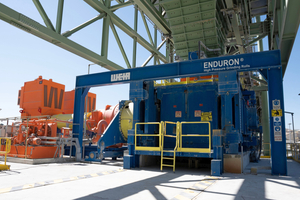
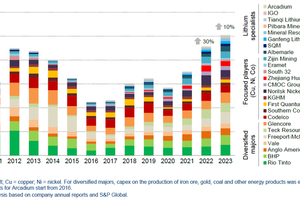
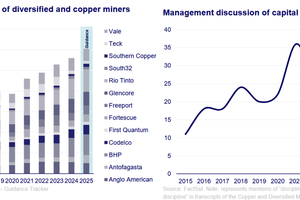
![3 Energy requirement and copper content [8]](https://www.at-minerals.com/imgs/2/2/6/5/5/5/3/tok_c91cf0105cc3ffe8d549148853c5c6ca/w300_h200_x600_y372_03_Bild3L_Ballantyne1-1eecb711427d6f9f.jpeg)
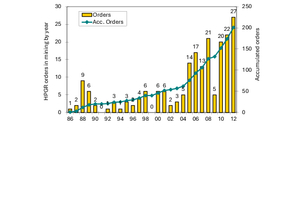
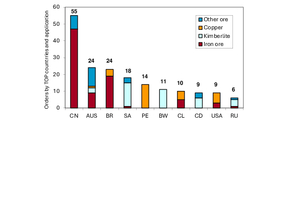
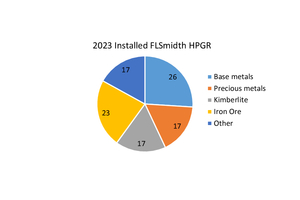
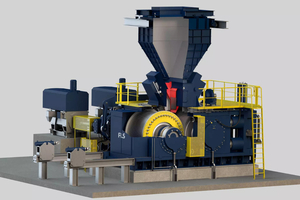
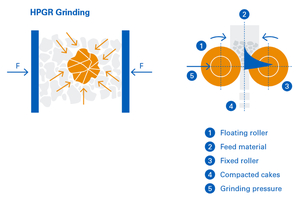

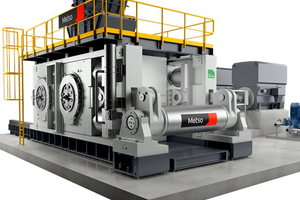
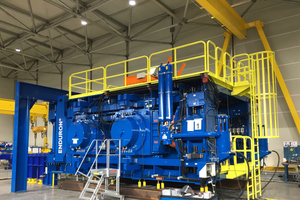
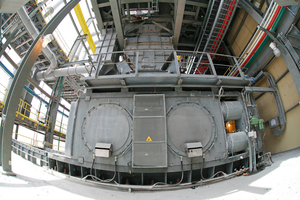
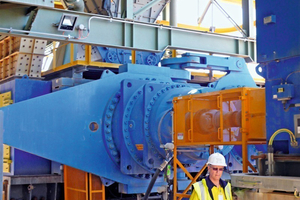
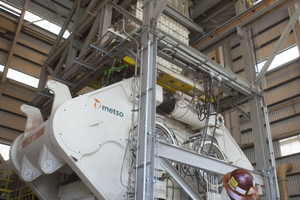
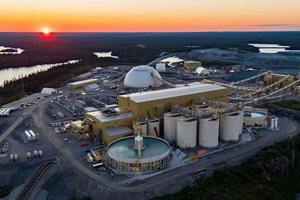
![16 Comparison between ball mill and HPGR [12]](https://www.at-minerals.com/imgs/2/2/6/5/5/5/3/tok_b095ebb468f45ca8353eb974cfc56acb/w300_h200_x297_y421_16_Harder_Ball_mills_1-fa8d5886ea9ca23e.jpeg)
![17 Energy comparison between SAG and HPGR [13]](https://www.at-minerals.com/imgs/2/2/6/5/5/5/3/tok_f3094732d2351e96b868deb79852bd08/w300_h200_x421_y297_17_Harder_SAG_Energy_NEU-0b71ad12c895b8f1.jpeg)
![18 Investment comparison between SAG and HPGR [13]](https://www.at-minerals.com/imgs/2/2/6/5/5/5/3/tok_407719267173c8c18f5a6a6a416ef67f/w300_h200_x297_y421_18_Harder_SAG_Invest_1-4674e08067b6595d.jpeg)
